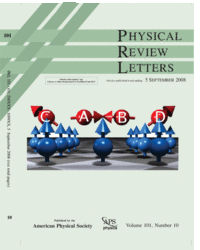Supramolecular control of the magnetic anisotropy in two-dimensional high-spin Fe arrays at a metal interface
The increasing need for miniaturized electronic and magnetic devices is pushing the development of novel, artificial materials whose properties can be tailored on the sub-nanometer scale. In the last twenty years, we have witnessed great progress in the performances of magnetic memories and sensors, which originated from basic investigations of the magnetic behavior of nanometer-thick metal films (see, e.g., the Nobel Prize in Physics 2007). More recently, the research focus has shifted towards hybrid materials, i.e., materials that are composed of two very dissimilar species, such as metallic and organic molecular layers. The hope is that, by combining the multitude of available molecules with the specific magnetic properties of metals, new methods and phenomena will be discovered to control the magnetoelectronic behavior of very small objects. Researchers working in this field, however, face two challenging problems. The first is how to assemble in an ordered way millions of tiny molecules on suitable substrates; The second is how the properties of such molecules will change when put in contact with a metallic layer.
The work performed by Pietro Gambardella, Sebastian Stepanow, and collaborators from across Europe, sponsored by the ESF SANMAG network, shows that iron atoms and a particular type of molecule called terephthalyc acid spontaneously self-assemble on a copper metal substrate due to the formation of strong coordination bonds. This gives rise to the formation of a two-dimensional metal-organic network where individual iron atoms are organized into a square lattice with 15 nm periodicity. Such a planar metal-organic layer would not form spontaneously by standard chemical reactions, as the molecules would tend to aggregate in three dimensions. By probing such a structure with two of the most powerful microscopy and spectroscopy techniques available today, namely scanning tunneling electron microscopy and synchrotron radiation, these researchers could show that the magnetic moment of the iron atoms embedded in the network can be controlled and directed by the choice of molecular ligands almost independently from the underlying copper substrate. This works shows how molecules and metals interact in very thin layer systems in contact with a metal surface, which is a basic step towards the exploitation of magnetic phenomena in hybrid materials.
The advance online publication is now available in Nature Materials.
Magnetism of Nanowires Driven by Novel Even-Odd Effects
Storing increasing amounts of data on increasingly small spaces is one of the prerequisites for further progress in information technology. A magnetic effect, which makes magnetic switches and logic elements conceivable on an atomic scale, has been discovered by theoretical scientists from the Research Center of Juelich in Germany. The results of their computer simulations mean that nanowires made of transition metals could be suitable for transporting and storing magnetic information.
Lounis, Dederichs and Bluegel discovered a kind of domino effect in rows of individual manganese atoms on a nickel surface. They noticed that the magnetic configuration of these nanowires differed depending on their length. Astonishingly, only one atom more or one less makes a drastic difference. When the number of atoms is odd, the orientation of the magnetic moments is antiparallel, and when the number is even, they line up in a toppled compromise position between parallel and antiparallel. Adding an atom at the end of the nanowire or taking one away simultaneously changes the magnetic configuration of the entire cluster. Just like a row of dominoes, the magnetic moments topple over. However, this is where the analogy ends because the effect can be completely reversed in contrast to dominoes that have toppled over.
This new quantum mechanical effect, which holds for long stretches of at least 100 atoms, has been discovered using a refined version of density functional theory. The authors hopes that it will be proven experimentally in the near future.
To read the full article please visit, Physical Review Letters, 101, 107204 (2008)
This research was carried out in the frame of the SANMAG (Self-Assembled Nanoscale Magnetic Networks) Project.


